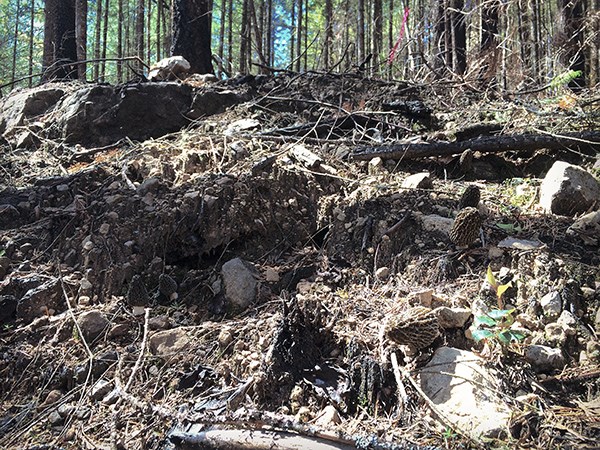Have you had a wild foraged salad? Made friends with dandelions? Purchased a book or gotten one out of the library to start a foraging journey?
I recently spoke with the formidable Isabelle Ranger from Namasthe Teas. Ranger knows the Sea to Sky Corridor well and has been foraging here for some time. She watches the cycles of weather as they come up from the Lower Mainland and is able to predict what will be popping and ripening by what is happening further south. By the time this article comes out, elderflowers will have come and gone in Squamish but just be starting in Whistler.
Ranger is a great resource for medicines and teas. Birch bark, for instance, is added to a couple of her tea blends, and young branches and saplings are used for medicine. The spring pollen pine cones that come from Douglas Fir trees also have a myriad of uses.
One of her favourites is sweetgale, an old herb used frequently in northern Europe for druitales as an aromatic. It can be found growing around bogs. Like a female piment royal, it is resinous, packs a punch, pairs beautifully with richer, wild game and is wonderful as a digestif. Beer fans might know it as an original botanical in beers prior to the hop frenzy. Perhaps one of the three new breweries opening in town (yes, three!) may be able to make use of some as well as hops from Squamish Valley Hop Company.
Most mushrooms make their appearance in the fall. Pemberton is supposed to be epic picking, where another foraging leader, Camille Flanjak, once found a three-pound “frankenchanterelle.” Ranger says that morels are out now along the Sea to Sky and if you haven’t had them, they are a delight to hunt and scrumptious.
Ranger and her company have a big focus in what they do on preparation and storing. A class with her – which will be being offered in the fall – will go more in depth on how to clean and work with your bounty once harvested.
She takes precaution in her foraging. Lookalikes can be poisonous. If you’re not sure, keep researching, and take your observation to the next level.
Ranger discusses basic safety as she forages with her family: Keep your eyes up, make noise, bring bear spray and a basic first aid kit, wear a hat and try to find a buddy with whom to explore.
Part of the fun of foraging is that plants aren’t very far away. Find places to pick that are not polluted. Importantly, different times of day are better for certain things. Most times you are not looking for the dew, except in the case of dandelions for dandelion wine, which I am heading out to pick tomorrow morning with my new foraging buddy and baby by my side. It’s fun for the whole family.
Take heed of good foraging practices – safety first and in Ranger’s wise words, leave it as though you were never there. Take a quarter to a third of what is there, and leave the rest for others and to rejuvenate. Take what you need and what you can process. Also, alternate years with your patches to allow things to regrow. No plants would mean no food, when you think about it.
May I also suggest to give something in return? A song? Tobacco in the way of the first peoples? A hair from your head?
Balance. Be in tune. We are nature.



